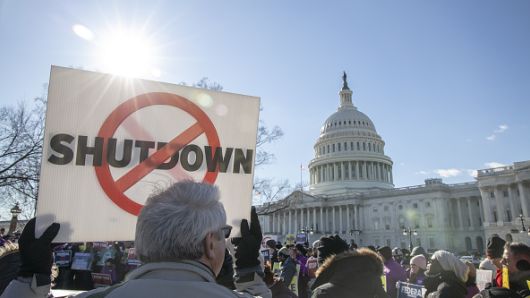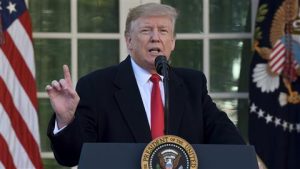
Katie Hèbert, Staff Writer |
The country’s most historic government shutdown has temporarily ended as of January 25, 2019, marking an end to the 35-day shutdown under President Trump.
The shutdown was due to President Trump’s unapproved border wall funding. The wall was to separate Mexico and the southern United States. After demanding 5.6 billion USD for the wall, with many representatives in the House and Senate strongly opposing the wall in its entirety, but President Trump did not want to give in, causing the groundbreaking shutdown our country has seen.
Since 1970, the government has only been shut down around a dozen times, with the most recent shutdown taking place back in January 2018 over the Deferred Action for Childhood Arrivals act (DACA), lasting three days. Before that, the government was shutdown in 2013 for 16 days as a protest to President Obama’s Affordable Care Act. Many of the country’s shutdowns however have not been “full” shutdowns, but only have shut down certain departments of the government, and have not lasted the length of this recent one.
As the shutdown reached a historic length, it proved to be very dangerous for the many federal and state workers around the nation, as they were forced to continue working without any pay, or risk losing their job altogether. The concerns of paying bills and affording to put food on the table became an emergency for many, some even selling their vehicles to make payments. Gregory Simpkins, a federal worker in Detroit, MI, told the Associated Press, “Next week, it’s going to be a panic mode. How are we going to pay rent? How are we going to pay our bills? How in the hell are we going to eat?”

Because of the shutdown, many government agencies were halted, including the National Parks Association, leaving locals in areas to go into National Parks and different areas of wildlife to do maintenance and garbage removal that would have normally been covered under this agency. Due to the length of the shutdown, many workers in the Transportation Security Administration and many of those working air traffic control started to not come in, creating a panic of potential travel shortages, delays, cancelations, and a lower level of security around travel. Other agencies and departments included in the shutdown were food inspections, public housing, and the Violence Against Women act, which funding was stopped for at the start of the shutdown.
After inaugurations from the midterm elections back in November, Democrats created multiple bills that were aimed to reopen the government. Speaker of the House, Nancy Pelosi, told President Trump, days before the end of the shutdown, that he will not be able to hold a State of the Union address until the government is reopened, and rather encouraged border security measures such as funds for border fencing and other technology and cameras.
While President Trump has sent many mixed messages concerning the reasoning behind the shutdown, he still plans to call the lack of funds “a national emergency,” should the motion not move forth. Nonetheless, the government was able to reopen on January 25. While it was first advertised as a temporary reopening, that would last only three weeks, until a deal about the wall was confirmed, many government officials refuse to let the government reclose anytime soon.
Leave a Reply